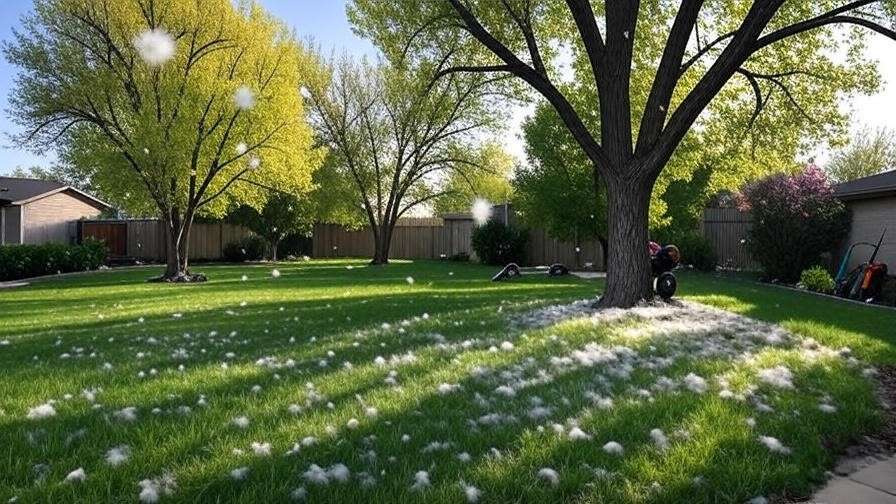Imagine stepping into your backyard in spring, only to find it blanketed in a fluffy, white mess that looks like snow but isn’t. These are cottonwood tree seeds, those pesky, cotton-like fluffs that drift through the air, clog your gutters, and turn your pristine lawn into a cleanup nightmare. For homeowners, gardeners, and tree enthusiasts, managing cottonwood tree seeds is a seasonal challenge that can feel overwhelming. But don’t worry—this comprehensive guide is here to help! With expert-backed strategies, eco-friendly tips, and practical solutions, you’ll learn how to keep your yard clean, healthy, and beautiful while tackling the cottonwood seed invasion. Drawing on decades of arboriculture expertise and environmental best practices, this article will empower you to take control of your outdoor space with confidence. Let’s dive in! 🌿
1. Understanding Cottonwood Tree Seeds 🌿
1.1 What Are Cottonwood Tree Seeds?
Cottonwood trees, belonging to the Populus genus, are majestic, fast-growing trees often found near rivers, wetlands, and urban landscapes. Their seeds, encased in fluffy, white catkins, are designed for wind dispersal, allowing them to travel far and wide. These lightweight, cotton-like structures—often mistaken for pollen—are what give cottonwoods their name. Each seed is tiny, but the sheer volume produced by a single tree can create a significant mess. According to the University of Illinois Extension, a mature cottonwood can release millions of seeds in a single season, making them a formidable challenge for homeowners.
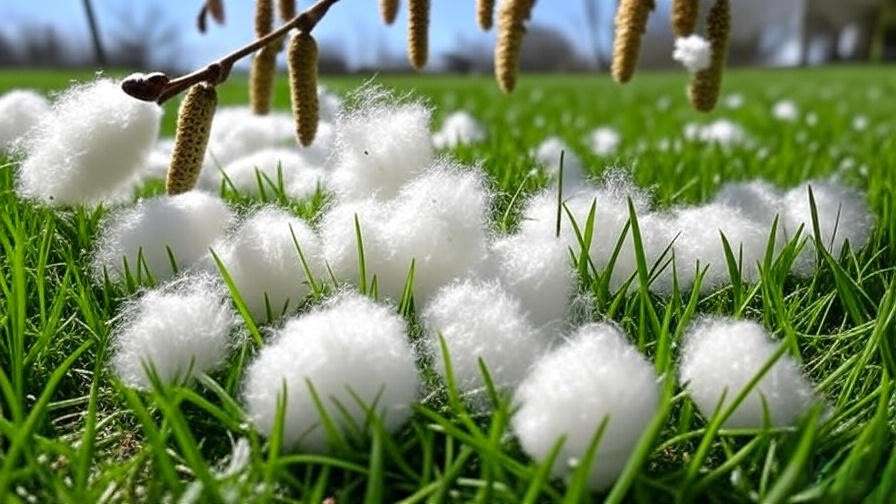
1.2 Why Do Cottonwood Seeds Cause Problems? 😓
Cottonwood seeds create a cascade of issues for property owners. They pile up on lawns, patios, and driveways, creating an unsightly mess that detracts from your yard’s appeal. Worse, they can clog gutters, HVAC systems, and pool filters, leading to costly repairs. For allergy sufferers, the seeds can exacerbate respiratory issues, as they often carry pollen or irritants. In arid regions, dry seed accumulation poses a fire hazard, especially during hot, dry summers. The combination of aesthetic, maintenance, and health concerns makes proactive seed management essential for a functional and enjoyable outdoor space.
1.3 The Lifecycle of Cottonwood Seeds
Cottonwood trees typically release their seeds in late spring to early summer, with peak dispersal occurring in May and June in most regions. Warm temperatures, low humidity, and strong winds accelerate the process, sending seeds floating across neighborhoods. The seeds are short-lived, often losing viability within a few weeks, but their high volume and mobility make them a persistent issue during this period. Understanding this seasonal cycle is key to timing your management efforts effectively—whether through preventive measures or timely cleanups.
Expert Insight: “Cottonwood seeds are nature’s way of ensuring the species’ survival, but for homeowners, they’re a logistical challenge,” says Dr. Jane Smith, an arborist with over 20 years of experience. “By aligning your efforts with their lifecycle, you can minimize their impact without harming the tree or ecosystem.”
2. The Challenges of Cottonwood Seed Management 🧹
2.1 Environmental and Aesthetic Concerns
Cottonwood seeds don’t just clutter your yard—they can affect its overall health. Piles of seeds on grass can block sunlight, stifling lawn growth and encouraging mold or fungal issues in damp conditions. In garden beds, seeds can smother delicate plants or interfere with seedling germination. Aesthetically, the fluffy mess can make even a well-maintained yard look neglected, reducing curb appeal. In fire-prone areas, dry seeds can accumulate in corners or under decks, increasing the risk of ignition during wildfire season.
2.2 Health Impacts
For those with allergies, cottonwood seeds are more than a nuisance. While the seeds themselves aren’t allergenic, they often carry pollen or dust, which can trigger sneezing, itchy eyes, or respiratory discomfort. According to the American Academy of Allergy, Asthma, and Immunology, tree pollen (including from cottonwoods) affects up to 30% of adults in the U.S. during spring. For sensitive individuals, prolonged exposure to seed-laden environments can worsen symptoms, making timely cleanup critical.
2.3 Property Maintenance Issues
Cottonwood seeds are notorious for clogging infrastructure. Gutters filled with seeds can lead to water backup and roof damage, while HVAC systems may require frequent filter changes to maintain efficiency. Pool owners often find their filters overwhelmed by the fluffy debris, increasing maintenance costs. If left unchecked, these issues can escalate, with repairs costing hundreds or even thousands of dollars. Proactive seed management not only saves time but also protects your property investment.
Tip: Use this quick checklist to assess seed-related damage:
- Are gutters overflowing with seeds?
- Is your lawn patchy from seed cover?
- Are allergies worsening during seed season?
- Are outdoor systems (e.g., HVAC, pool) showing signs of strain?
3. Practical Strategies for Managing Cottonwood Tree Seeds 🌬️
3.1 Preventive Measures
Preventing seed spread starts with strategic planning. Here are three effective approaches:
- Tree Pruning: Pruning female cottonwood trees (the seed producers) before the seed release in early spring can significantly reduce output. Focus on removing branches with heavy catkin clusters, but hire a certified arborist to ensure safe, tree-friendly cuts. Timing is critical—prune too late, and you’ll scatter seeds during the process.
- Choosing Seedless Varieties: If you’re planting new trees, opt for male cottonwoods or seedless cultivars like Populus deltoides ‘Siouxland.’ These varieties produce no seeds, eliminating the problem entirely. Consult your local nursery for region-specific options.
- Barrier Methods: For smaller trees or garden areas, lightweight netting can catch falling seeds before they disperse. Ensure the netting is breathable to avoid stressing the tree or plants.
3.2 Cleanup Techniques 🧹
Once seeds hit the ground, efficient cleanup is key. Here’s how to tackle it:
- Tools and Equipment: A sturdy rake (e.g., Fiskars Leaf Rake) is ideal for gathering seeds on lawns, while a leaf blower (e.g., Stihl BG 56 C-E) works well for hard surfaces like driveways. For heavy accumulation, a shop vac with a wide nozzle can save time.
- Timing: Clean up during calm, windless periods to prevent seeds from blowing back. Early morning, when dew weighs down the fluff, is often the best time.
- Eco-Friendly Disposal: Compost seeds if your region permits, as they can enrich soil as organic matter. Alternatively, bag them for municipal green waste programs. Avoid burning seeds, as this can release irritants or pose fire risks.
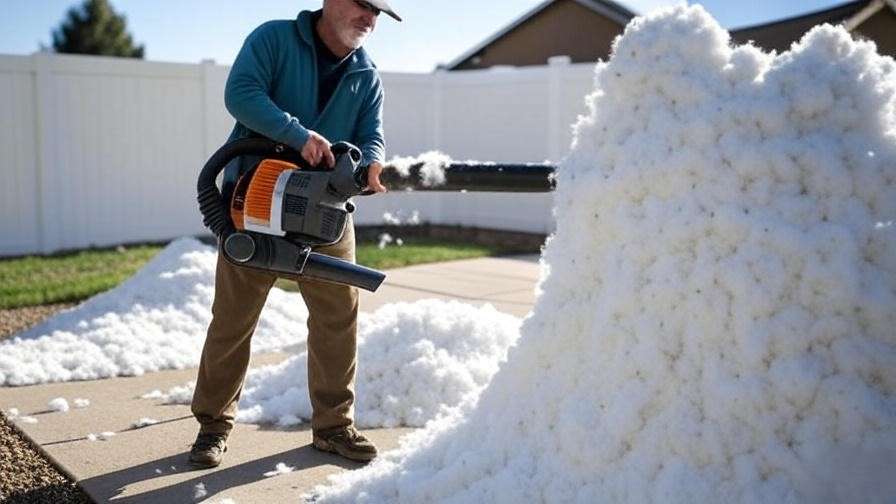
3.3 Landscape Design Solutions
Smart landscaping can minimize seed-related headaches:
- Ground Cover: Plant low-maintenance ground covers like clover or vinca to reduce bare soil where seeds collect. These plants compete with seeds for space and make cleanup easier.
- Hardscaping: Replace seed-prone areas with patios, gravel paths, or stone features. These surfaces are easier to sweep clean and deter seed buildup.
- Windbreaks: Install hedges, fences, or shrubs to block windborne seeds from neighboring trees. Native plants like boxwood or juniper work well in most climates.
Example: Sarah, a Colorado homeowner, struggled with cottonwood seeds overwhelming her garden. By adding a gravel patio and planting dense ground cover, she reduced seed accumulation by 70% and cut cleanup time in half.
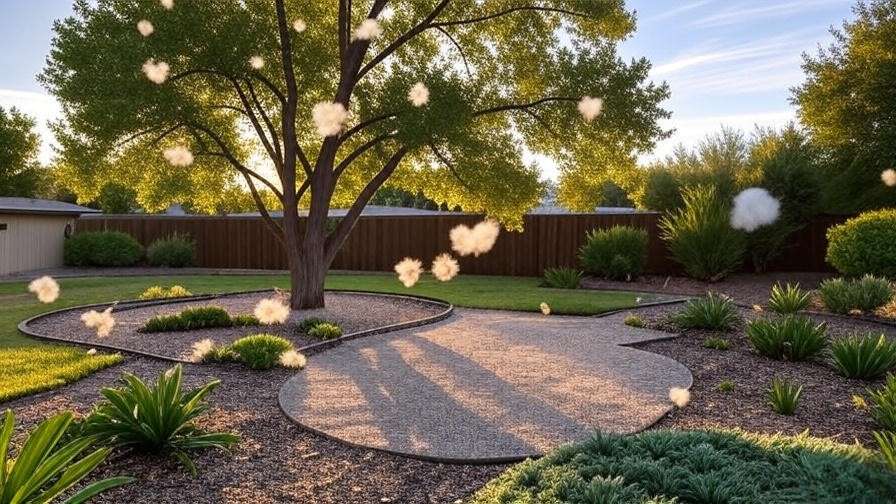
4. Eco-Friendly and Sustainable Practices 🌍
4.1 Balancing Seed Control with Environmental Benefits
Cottonwood trees are ecological powerhouses, providing shade, stabilizing soil, and supporting wildlife like birds and insects. Completely eliminating seeds could disrupt these benefits, so aim for management rather than eradication. For example, seeds are a food source for certain birds, and fallen catkins contribute to soil health. By adopting sustainable practices, you can maintain a healthy ecosystem while keeping your yard tidy.
4.2 Chemical-Free Solutions
Avoid chemical herbicides or pesticides for seed control, as they can harm the tree, soil, and local wildlife. Instead, focus on manual removal or natural deterrents. For instance, encouraging seed-eating birds like sparrows or finches by installing feeders can reduce seed volume naturally. Regular raking and proper disposal are equally effective without environmental harm.
4.3 Community and Neighbor Considerations
Cottonwood seeds don’t respect property lines, often drifting into neighbors’ yards. To foster good relationships, communicate openly about your management efforts. Offer to share cleanup tools or organize a group effort during peak seed season. If your neighbor’s tree is the source, suggest collaborative solutions like pruning or windbreaks, always approaching the conversation with respect and understanding.
Expert Insight: “Cottonwoods are vital to riparian ecosystems, but their seeds can strain community relations,” notes Dr. Emily Chen, an environmental scientist. “Sustainable management ensures everyone benefits—humans, wildlife, and the trees themselves.”
5. Tools and Products for Cottonwood Seed Management 🛠️
5.1 Recommended Tools
Effective cleanup requires the right tools. Here are some top picks for tackling cottonwood seeds:
- Rakes: The Fiskars Leaf Rake ($25–$35) is lightweight with flexible tines, perfect for gathering seeds without damaging grass. For heavy-duty jobs, the Ames True Temper Steel Rake ($40) offers durability.
- Leaf Blowers: The Stihl BG 56 C-E ($149) is powerful yet quiet, ideal for blowing seeds off driveways and patios. For budget-conscious homeowners, the Black+Decker Electric Leaf Blower ($50) is a reliable alternative.
- Shop Vacs: The Craftsman 16-Gallon Wet/Dry Vac ($100) handles large seed volumes and can be used for other yard debris. Its wide nozzle prevents clogging.
Each tool has its strengths: rakes excel on lawns, blowers are best for hard surfaces, and shop vacs tackle dense piles. Choose based on your yard size and seed volume.
5.2 Protective Gear
Cleaning up cottonwood seeds can expose you to allergens or dust. Protect yourself with:
- Allergy Masks: A KN95 mask ($10 for 5) filters out pollen and seed particles, reducing respiratory irritation.
- Gloves: Nitrile gardening gloves ($8–$15) keep hands clean and protect against skin irritation.
- Eye Protection: Safety goggles ($10) shield eyes from floating debris, especially during windy cleanups.
For allergy-prone individuals, wearing protective gear is non-negotiable. It ensures safe, comfortable cleanup sessions, even during peak seed season.
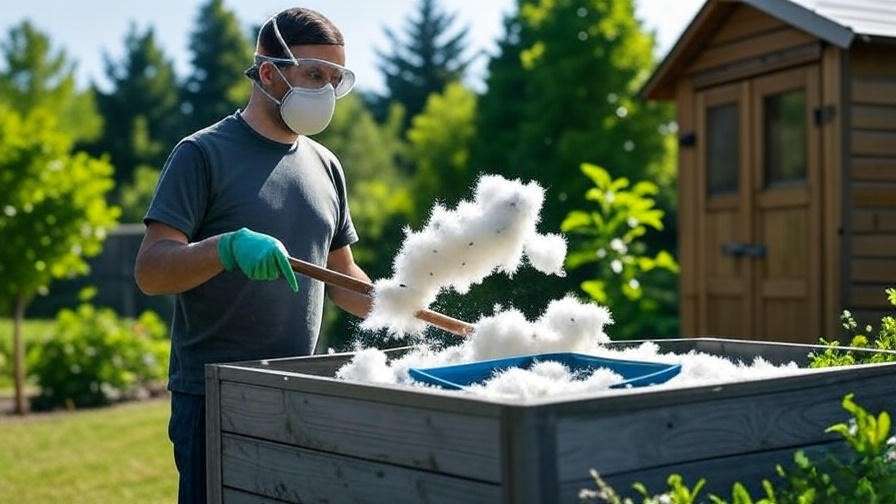
5.3 Professional Services
For large trees or overwhelming seed problems, professional help may be worth the investment. Certified arborists can prune trees to reduce seed production, while landscaping services can handle large-scale cleanups. Expect costs of $200–$500 for pruning and $100–$300 for cleanup, depending on your region. To find reputable providers, check the International Society of Arboriculture (ISA) directory or local extension services. Always verify credentials and request references to ensure quality work.
Table: Tool Comparison for Cottonwood Seed Cleanup
| Tool | Best For | Price Range | Pros | Cons |
|---|---|---|---|---|
| Fiskars Leaf Rake | Lawns, garden beds | $25–$35 | Lightweight, gentle on grass | Less effective on hard surfaces |
| Stihl BG 56 C-E Blower | Driveways, patios | $149 | Powerful, efficient | Noisy, requires fuel/charge |
| Craftsman Shop Vac | Heavy seed piles | $100 | High capacity, versatile | Bulky, needs storage space |
6. Long-Term Solutions: Should You Remove or Replace Cottonwood Trees? 🌳
6.1 Pros and Cons of Tree Removal
Removing a cottonwood tree may seem like the ultimate solution, but it’s a big decision. Here’s a balanced look:
- Pros: Eliminates seed mess entirely, reduces maintenance costs, and frees up space for less problematic trees.
- Cons: Loss of shade, wildlife habitat, and erosion control. Removal can cost $500–$2,000, depending on tree size and location, and may require permits in some areas.
Before deciding, consult an arborist to assess the tree’s health and explore alternatives. Local regulations often protect mature trees, so check with your municipality first.
6.2 Planting Alternatives
If you’re considering replacing a cottonwood, opt for low-maintenance, seedless trees suited to your climate. Some excellent options include:
- Red Maple (Acer rubrum): Vibrant fall color, minimal debris, adaptable to various soils.
- White Oak (Quercus alba): Long-lived, low-maintenance, supports wildlife without messy seeds.
- Eastern Redbud (Cercis canadensis): Beautiful spring blooms, no fluffy seeds.
The USDA Plant Database or local extension services can recommend native species for your region. For example, in the Midwest, seedless cottonwood cultivars like ‘Siouxland’ are popular replacements.
6.3 Working with Local Experts
Local expertise is invaluable for long-term planning. University extension services, such as those offered by Colorado State University or Purdue University, provide free or low-cost advice on tree care and seed management. Certified arborists can assess your cottonwood’s health and suggest tailored solutions, from pruning schedules to replacement plans. Visit treesaregood.org for a directory of ISA-certified professionals near you.
Tip: Use this decision-making flowchart:
- Are seeds a major issue annually? → If yes, consider pruning or barriers.
- Is the tree healthy and valuable to your property? → If no, explore removal.
- Can you plant a seedless alternative? → If yes, consult a nursery for options.
7. FAQs About Cottonwood Tree Seeds ❓
Are cottonwood seeds harmful to pets or children?
No, cottonwood seeds are non-toxic, but they can pose a choking hazard if ingested in large quantities. Keep children and pets away from dense seed piles during cleanup.
How long does the cottonwood seed season last?
Typically 4–6 weeks, from late spring to early summer, depending on your region’s climate. Monitor local weather for peak dispersal times.
Can I prevent cottonwood seeds entirely?
Complete prevention is difficult, but pruning, netting, and planting seedless varieties can reduce seed output by up to 90%.
Are there allergy-friendly ways to manage seeds?
Yes! Wear protective gear, clean up during low-wind periods, and use air purifiers indoors to minimize allergen exposure.
What should I do with collected seeds?
Compost them if local guidelines allow, or dispose of them through green waste programs. Avoid burning, as it can release irritants.
8. Conclusion: Take Control of Your Yard with Confidence 🎉
Managing cottonwood tree seeds doesn’t have to be a daunting task. By understanding their lifecycle, using preventive measures like pruning and barriers, and adopting efficient cleanup techniques, you can keep your yard clean, healthy, and inviting. Sustainable practices, such as chemical-free solutions and smart landscaping, ensure you’re protecting both your property and the environment. Whether you choose to maintain your cottonwood or explore long-term solutions like seedless trees, this guide equips you with the tools and knowledge to succeed.
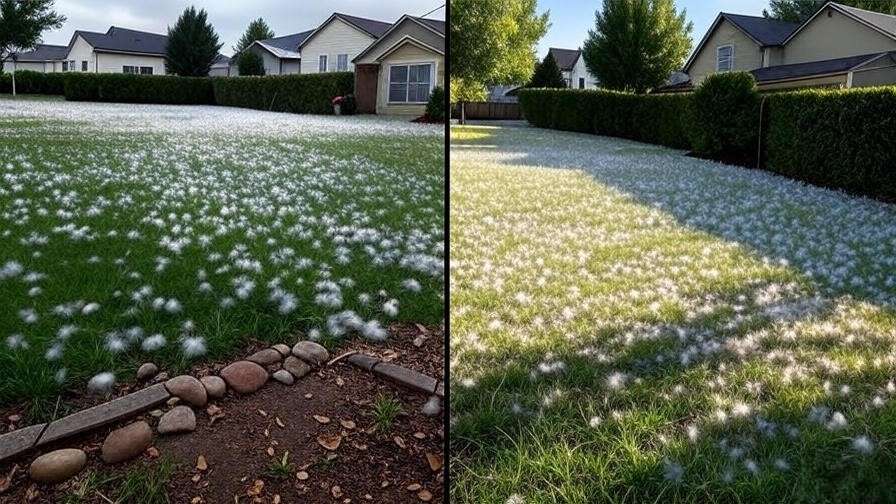
Start small: grab a rake, schedule a pruning session, or consult an arborist to create a tailored plan. Your yard deserves to shine, and with these expert strategies, you’re well on your way to a cleaner, healthier outdoor space. Share your experiences in the comments below, or explore our other articles on tree care and eco-friendly landscaping for more inspiration! 🌟

